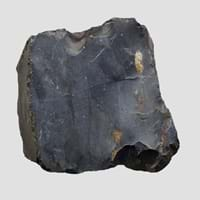Definition
Chert is a hard, dark, opaque sedimentary rock which is composed of silica with an amorphous fine-grained texture
Rhyolite is a fine-grained igneous rock which is rich in silica
Origin
Unknown
North America
Discoverer
Unknown
Ferdinand von Richthofen
Etymology
From flint-like quartz, 1670s, of unknown origin- a local term, which has been taken into geological use
From German Rhyolit, from Greek rhuax lava stream + lithos stone
Class
Sedimentary Rocks
Igneous Rocks
Sub-Class
Durable Rock, Hard Rock
Durable Rock, Hard Rock
Group
Not Applicable
Volcanic
Other Categories
Fine Grained Rock, Opaque Rock
Coarse Grained Rock, Opaque Rock
Texture
Banded, Rough
Aphanitic, Glassy, Porphyritic
Color
Black, Brown, Green, Grey, Red, White
Grey, White, Light Black
Durability
Durable
Durable
Scratch Resistant
Yes
Yes
Appearance
Glassy or Pearly
Banded
Interior Uses
Decorative Aggregates, Homes
Decorative Aggregates, Homes, Hotels, Interior Decoration, Kitchens
Exterior Uses
As Building Stone, As Facing Stone, Garden Decoration, Office Buildings
As Building Stone, As Facing Stone, Paving Stone, Office Buildings
Other Architectural Uses
Curbing
Not Yet Used
Construction Industry
Arrowheads, Construction Aggregate, Cutting Tool, Spear Points
Arrowheads, As Dimension Stone, Building houses or walls, Construction Aggregate, Cutting Tool, for Road Aggregate, Knives
Medical Industry
Not Yet Used
Not Yet Used
Antiquity Uses
Artifacts, Monuments
Artifacts
Commercial Uses
Creating Artwork, Gemstone, In fire-starting tools, Jewelry, To ignite fire, Used in flintlock firearms
Gemstone, Laboratory bench tops, Jewelry
Types
Flint, Jasper, Radiolarite, Common Chert, Chalcedony, Agate, Onyx, Opal, Magadi-type Chert, Porcelanite, Siliceous Sinter
Pumice Rocks, Obsidian Rocks, Perlite Rocks, Porphyritic Rocks.
Features
Clasts are smooth to touch, Easily splits into thin plates, Has High structural resistance against erosion and climate
Acidic in nature, Available in lots of colors
Archaeological Significance
Monuments
Used
Not Yet Used
Famous Monuments
Data Not Available
Not Applicable
Sculpture
Not Yet Used
Not Yet Used
Famous Sculptures
Not Applicable
Not Applicable
Pictographs
Not Used
Not Used
Petroglyphs
Not Used
Not Used
Figurines
Not Yet Used
Not Yet Used
Formation
Chert forms when microcrystals of silicon dioxide grow within soft sediments that become limestone or chalk. The chert formation can be either of chemical or biological origin.
Rhyolite is a felsic extrusive rock and due to its high silica content, rhyolite lava is very viscous and is volcanic equivalent of granite.
Mineral Content
Quartz, Silicon
Biotite, Feldspar, Hornblade, Plagioclase, Pyroxene, Quartz
Compound Content
Silicon Dioxide
Ca, Fe, Potassium Oxide, Mg, Potassium, Silicon Dioxide, Sodium
Types of Metamorphism
Not Applicable
Burial Metamorphism, Cataclastic Metamorphism, Regional Metamorphism
Types of Weathering
Not Applicable
Biological Weathering, Chemical Weathering, Mechanical Weathering
Types of Erosion
Chemical Erosion
Chemical Erosion, Sea Erosion, Water Erosion, Wind Erosion
Grain Size
Very fine-grained
Large and Coarse Grained
Fracture
Uneven, Splintery or Conchoidal
Sub-conchoidal
Porosity
Highly Porous
Highly Porous
Luster
Waxy and Dull
Earthy
Cleavage
Non-Existent
Not Available
Specific Gravity
2.5-2.8
2.65-2.67
Transparency
Translucent to Opaque
Opaque
Density
2.7 g/cm3
2.4-2.6 g/cm3
Specific Heat Capacity
Not Available
Resistance
Heat Resistant, Impact Resistant, Pressure Resistant, Wear Resistant
Heat Resistant, Wear Resistant
Deposits in Eastern Continents
Asia
China, India, Iran, Japan, Oman, Russia, Saudi Arabia, Taiwan, Thailand, Vietnam
China, India
Africa
Kenya, Morocco, South Africa, Tanzania
Angola, Egypt, Madagascar, Namibia, Nigeria, South Africa
Europe
Austria, France, Greece, Italy, Malta, Poland, Portugal, Serbia, Spain, Sweden, United Kingdom
Germany, Iceland, Ireland, Italy, Spain
Others
Greenland, Mid-Atlantic Ridge
Not Yet Found
Deposits in Western Continents
North America
Canada, Mexico, USA
Canada, USA
South America
Bolivia, Brazil
Argentina, Bolivia, Chile, Colombia, Ecuador, Peru, Venezuela
Deposits in Oceania Continent
Australia
New South Wales, Queensland, South Australia, Western Australia
New Zealand, Queensland, Western Australia
All about Chert and Rhyolite Properties
Know all about Chert and Rhyolite properties here. All properties of rocks are important as they define the type of rock and its application. Chert belongs to Sedimentary Rocks while Rhyolite belongs to Igneous Rocks.Texture of Chert is Banded, Rough whereas that of Rhyolite is Aphanitic, Glassy, Porphyritic. Chert appears Glassy or Pearly and Rhyolite appears Banded. The luster of Chert is waxy and dull while that of Rhyolite is earthy. Chert is available in black, brown, green, grey, red, white colors whereas Rhyolite is available in grey, white, light black colors. The commercial uses of Chert are creating artwork, gemstone, in fire-starting tools, jewelry, to ignite fire, used in flintlock firearms and that of Rhyolite are gemstone, laboratory bench tops, jewelry.










